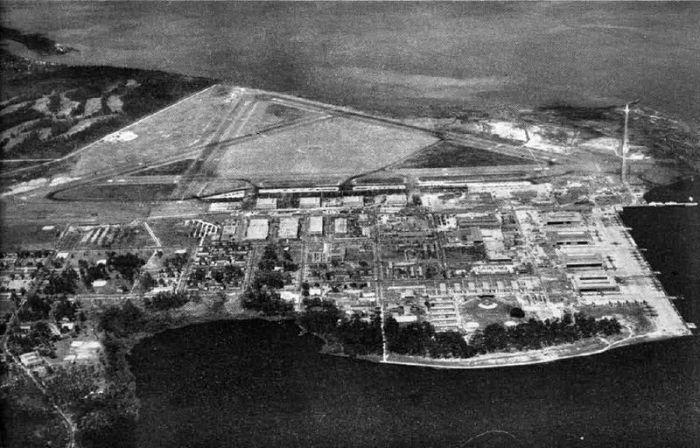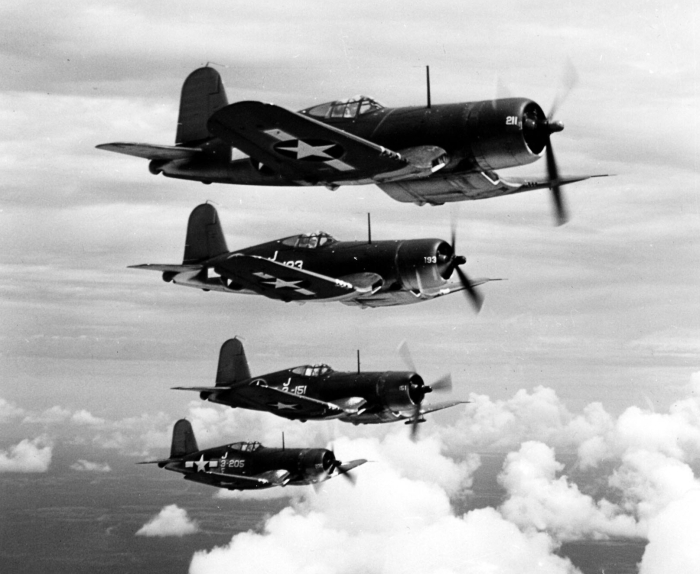At 10 o’clock of the morning of March 18, 1952, two women reached the 405th 7th hole at the Timuquana Country Club in Jacksonville, Florida. They were good golfers. One of them, Bertha Johnson, had been Jacksonville City Champion in 1938 and, now aged in her early 50’s, was still good enough to compete in tournaments. She had been president of the Jacksonville Women’s Golf Association for two years after the end of World War 2. Bertha and her playing partner, 38 year old Mary Dempsey, drove off from the 7th tee and started walking towards their balls. They were oblivious of any danger – it was just another round of golf to be enjoyed.
The pilot was on a routine training flight from the Jacksonville Naval Air Station base that bordered the Timuquana Country Club.

He was worried – the oil pressure gauge on his Vought F4U Corsair fighter was registering a low reading and engine power was below normal. He called the base to request an emergency landing. The duty runway was cleared and prepared.
The pilot made his approach to the runway, but all was not right. The engine of the Corsair was behaving erratically, so the pilot didn’t have enough control to land the plane. He flew past the runway, turned right and hoped to make another approach with enough control to land. Suddenly, the Corsair’s engine died completely. The plane was now a glider – no power, no noise, and no chance of making it back to the runway. The pilot looked at what was available to land. Was there anywhere to land? He saw a strip of grass on the Timuquana Country Club – it was the 7th fairway.

A man driving a van was making a delivery from his fruit and vegetable stall on Roosevelt Boulevard to the Naval Air Station. He saw the Corsair come in low over the buildings with smoke pouring out of the engine cowling. “It’s going to crash”, he said to his wife. The Corsair pulled back up into the air a little, but no higher than the tree-tops. The man and his wife watched it disappear behind the trees.

Johnson and Dempsey played their second shots about 220 yards from the 7th tee. They then strolled in a leisurely way down the centre of the fairway towards the green. Their caddie, 19 year old Theodore Rutledge, walked about 35 yards behind them, along the eastern side of the fairway. Rutledge looked up, and saw the Corsair. It was coming in silently against the wind, strangely unobtrusive, its long nose and black engine smoke obscuring the pilot’s forward vision. Rutledge yelled a warning to the Johnson and Dempsey, who didn’t hear him, and then ducked and ran.
The Corsair landed in the middle of the 7th fairway and hit the women from behind with the propellor. One body was thrown 35 feet, the other 65 feet. Johnson and Dempsey were killed instantly. The plane continued down the 7th fairway for another 155 yards, veering towards a clump of trees in the rough on the western side of the fairway. It crashed into the trees and the impact broke off the engine and the cowling. The pilot scrambled out of the wreckage and then watched the Corsair burst into flames. He was standing by the burning plane when the course superintendent arrived.

“Are you hurt?”, asked the superintendent.
“No, thank God,” said the pilot. “I got out before the fire started”.
Rutledge rushed up and blurted out the news that two golfers had been killed.
The pilot went to pieces.

Andrew Ward’s book “Golf’s Strangest Rounds” – Extraordinary but true stories from over a cenury of history”, Robson Books, London, 1999 p. 154-155 was the source for this blog post.